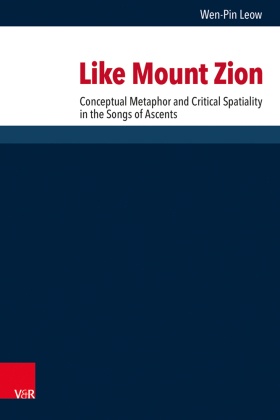
Like Mount Zion - Conceptual Metaphor and Critical Spatiality in the Songs of Ascents
| Verlag | Vandenhoeck & Ruprecht |
| Auflage | 2024 |
| Seiten | 344 |
| Format | 16,0 x 2,8 x 23,5 cm |
| Gewicht | 686 g |
| Artikeltyp | Englisches Buch |
| Reihe | Forschungen zur Religion und Literatur des Alten und Neuen Testaments Band 288 |
| ISBN-10 | 3525500068 |
| EAN | 9783525500064 |
| Bestell-Nr | 52550006A |
Wen-Pin Leow proposes a framework to apply conceptual metaphor theory as a novel method for critical spatial investigation of biblical texts. To demonstrate the utility of the proposed method, Leow applies it to the Songs of Ascents (Pss 120-134), particularly focusing on the motif of Zion. He highlights the varied complexity of the motif within the corpus. Using the proposed method, the author demonstrates that the traditional understanding of the corpus as a pilgrim psalter is not justified. Instead, he argues that the corpus was used within agrarian communities in Yehud during the post-exilic era for the purpose of fostering Zion-centric unity.
A framework to apply conceptual metaphor theory as critical-spatial method
Critical spatial approaches - particularly those informed by the scholarship of Lefebvre, Foucault, and Soja - have significantly impacted biblical scholarship over the last twenty years. However, these spatial approaches have been limited due to the methodological challenges inherent in transposing the social-scientific approaches of the aforementioned scholars to the task of biblical interpretation. This volume adapts conceptual metaphor theory as a methodological bridge to address such constraints. The first half of the volume begins by surveying the field of critical spatiality in biblical studies, arguing for the need for fresh methodological development. Thereafter, the volume delineates a particular critical spatial approach, inspired by Lefebvre and Foucault, for which conceptual metaphor theory is proposed as a methodological bridge. The second half of the volume begins by proposing the Psalms of Ascents as a case study upon which the method could be applied. It is th en argued that the proposed method - if efficacious - should provide insight on corpus' "Zion theology" and its so-called pilgrimage character. Using the proposed method in conjunction with conventional historical-grammatical tools of poetic analysis, each psalm is analysed with regard to its metaphor and spatiality. The volume concludes that the case study demonstrates the efficacy of the proposed methods by allowing a rich reading of each psalm, especially by explicating the spatial narratives and/or spatial metaphorical conceptualisations that underlie each text, and providing fresh insight on the collection as a whole.
This volume has been awarded the 2024 Rev. Dr Lien-Hwa Chow Memorial Foundation's Outstanding Theological Research Book Award. This award is "to recognize and promote outstanding theological research and publications by Chinese scholars".
